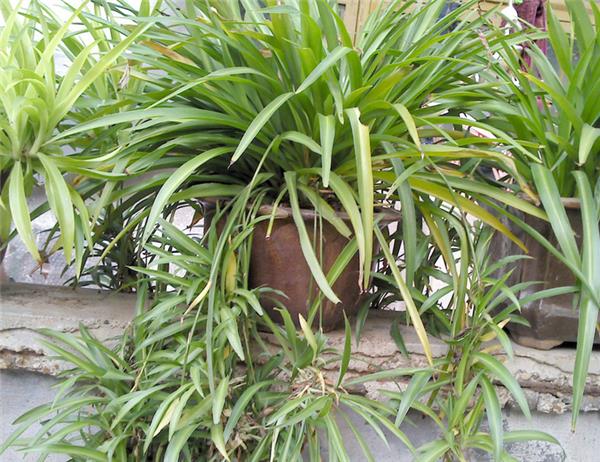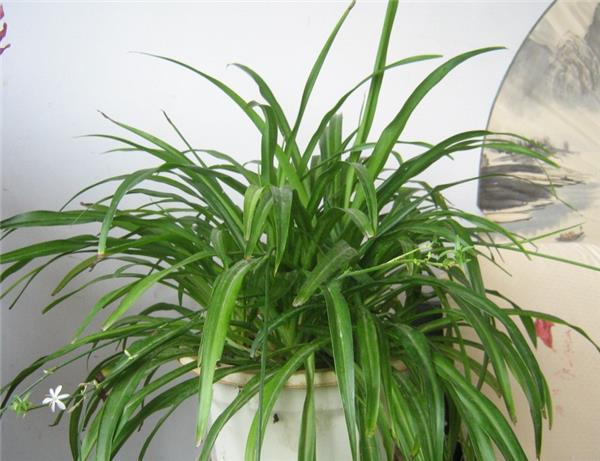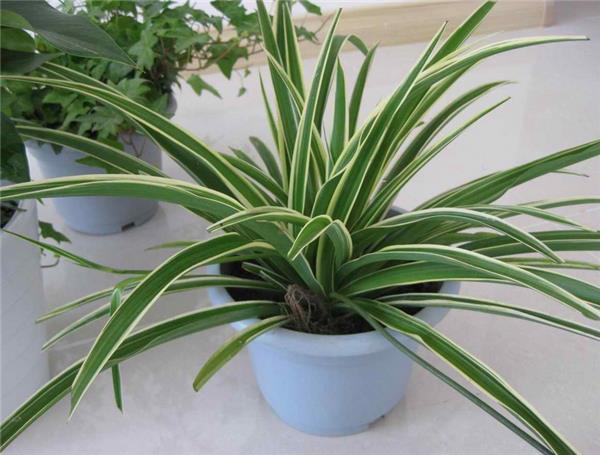The cause of yellowing of Cymbidium leaves and its solution
Cymbidium is a kind of highly appreciative plant, which has many kinds, different forms and different characteristics. today, we would like to introduce the causes and solutions to the yellowing of the leaves of Cymbidium. Let's take a look!

The reason for the yellowing of the leaves of Cymbidium
1. Fertilizing too much, exceeding the demand of the plant, the leaves will appear bright and uneven after fertilization, and then the roots will turn yellow due to malnutrition after partial decay. So at this time should stop fertilizing, more watering, or rice basin to wash the roots, change the new soil is also a very good way. It can be seen that the spatial soil liquid concentration is very important.
two。 The soil has not been turned over for a long time, and the soil is hardened when all the nutrients in the basin are exhausted. The deficiency of the three most important elements, nitrogen, phosphorus and potassium, makes the leaves gradually turn yellow. At this time, the soil should be changed or fertile loam and fertile water should be replaced in time.
3. Cymbidium is a semi-shade flower, but it also needs light, so you should keep at least 4-5 hours of light every day. Otherwise, the leaves will turn yellow when the chlorophyll decreases. The best way is to put it under an indoor incandescent lamp or on a balcony.

The solution to the yellowing of Cymbidium leaves
1. The yellowing of Cymbidium leaves may be due to excessive fertilization, which exceeds the requirement of the plant. At the beginning, the leaves were shiny and uneven, the roots rotted and the leaves were yellow. Should stop fertilizing, irrigate more water, or turn the pot to clean the root and replace the new soil.
two。 The yellowing of orchid leaves may also be caused by not turning the basin and changing the soil for a long time. The various nutrient elements in the basin soil have been exhausted, the three elements of nitrogen, phosphorus and potassium have not been replenished in time, the plant is lack of nutrients, and the leaves are yellow and thin. Fertile loam and fertile water should be replaced in time.
3. The yellowing of orchid leaves may also be caused by lack of light. Although the orchid is a semi-negative flower, at least four hours of astigmatism should be seen every day, otherwise the chlorophyll will decrease and the leaves will turn yellow.
4. The air permeability and water permeability of basin soil are not good, which leads to long-term stagnant water and difficulty in root respiration, so the leaves turn yellow naturally. At this time, we should loosen the soil and control moisture in time. Fifth, it is impervious to water for a long time. The roots of Cymbidium lose water, and the lower old leaves turn yellow. It should be watered thoroughly to keep the basin soil warm and moist.

Tips on the maintenance of hanging orchids
Maintenance method of hanging orchid in winter: move it indoors and water it every four days, watering thoroughly, preferably at noon, when the water temperature is the same as the air temperature. This can prevent the roots from freezing, and the leaves should be cleaned frequently when placed indoors. It is advisable to keep the basin soil slightly moist in winter. When the room temperature is kept at 15-20 ℃, the orchid can grow normally.
Light
Hanging orchids like semi-overcast environment, spring and autumn should avoid strong direct sunlight, summer sun is particularly strong, can only see some oblique light in the morning and evening, during the day need to cover 50% of the sun's 70%, otherwise it will make leaf tips dry, especially flower and leaf varieties, more afraid of strong sunlight, Phnom Penh orchids grow more beautiful in places with weak light, yellow edges are more obvious, leaves are brighter. But it should be more sunny in winter in order to keep the leaves tender and fresh green. The family potted orchid should be placed in front of the south window, otherwise the leaves will lose their luster and even wither. When conditions permit, it is best to rotate the flowerpot to a fixed direction about 15 °a week to ensure that the drooping degree of the orchid is the same.
Watering
The hanging orchid likes the wet environment, and the basin soil is easy to keep wet. Summer watering should be adequate, around noon and evening should also spray water on the branches and leaves, timely cleaning the dust on the leaves to prevent the leaves from drying up. However, the fleshy roots of Cymbidium can store a lot of water, so they have a strong ability to resist drought and will not dry to death if they are not watered for several days. Under 5 ℃ in winter, less watering, basin soil should not be too wet, otherwise the leaves will be easy to yellowing.

Fertilizer application
Cymbidium is a more fertilizer-tolerant foliage plant, if the lack of fertilizer and water, it is easy to scorch head aging, leaves yellowing, loss of ornamental value. From late spring to early autumn, organic fertilizer can be applied every 7-10 days, but less nitrogen fertilizer should be applied to Phnom Penh, Jinxin and other mosaic varieties, lest the color of flowers and leaves fade or even disappear. The retting organic fertilizer such as bone powder and eggshell can be applied properly. after full fermentation, take appropriate amount of diluent and irrigate every 10-15 days to make the flowers and leaves bright and bright.
Liquid fertilizer is applied every two weeks during the growing season. Mosaic varieties should apply less nitrogen fertilizer, otherwise the white or yellow markings on the leaves will become inobvious and stop fertilization when the ambient temperature is below 4 ℃.
Pruning
Usually cut off the yellow leaves at any time. The basin can be turned once a year in March to cut off the old root, rotten root and excess fibrous root. Cutting off some of the old leaves of Cymbidium in the first and middle of May will promote the germination of more new leaves and small orchids. The root system of Cymbidium is quite well developed, and the flowerpot should be changed in time after breeding for a period of time, so as to avoid root accumulation, resulting in yellow leaves, wilting and other phenomena.
The orchid is not only for viewing, but also can absorb indoor harmful gases such as carbon monoxide, carbon dioxide, sulfur dioxide and nitrogen oxides, playing the role of air screening program. I hope everyone can grow a healthy and good plant.
Watering every 10-15 days can make the flowers and leaves bright and bright.
Liquid fertilizer is applied every two weeks during the growing season. Mosaic varieties should apply less nitrogen fertilizer, otherwise the white or yellow markings on the leaves will become inobvious and stop fertilization when the ambient temperature is below 4 ℃.
Pruning
Usually cut off the yellow leaves at any time. The basin can be turned once a year in March to cut off the old root, rotten root and excess fibrous root. Cutting off some of the old leaves of Cymbidium in the first and middle of May will promote the germination of more new leaves and small orchids. The root system of Cymbidium is quite well developed, and the flowerpot should be changed in time after breeding for a period of time, so as to avoid root accumulation, resulting in yellow leaves, wilting and other phenomena.
The orchid is not only for viewing, but also can absorb indoor harmful gases such as carbon monoxide, carbon dioxide, sulfur dioxide and nitrogen oxides, playing the role of air screening program. I hope everyone can grow a healthy and good plant.
Related
- Wuhan Hospital Iron Tree Blooming Result Was Instantly Frightened by the Gardener Master
- Which variety of camellia is the most fragrant and best? Which one do you like best?
- What is the small blue coat, the breeding methods and matters needing attention of the succulent plant
- Dormancy time and maintenance management of succulent plants during dormancy
- Minas succulent how to raise, Minas succulent plant pictures
- What are the varieties of winter succulent plants
- How to raise succulent plants in twelve rolls? let's take a look at some experience of breeding twelve rolls.
- Attention should be paid to water control for succulent plants during dormant period (winter and summer)
- Watering experience of twelve rolls of succulent plants
- Techniques for fertilizing succulent plants. An article will let you know how to fertilize succulent plants.



